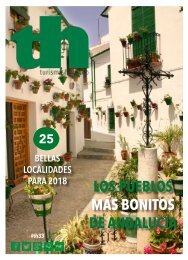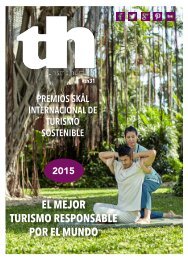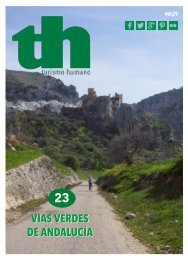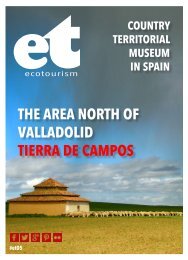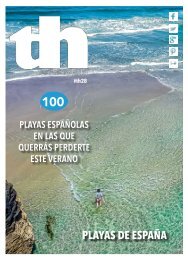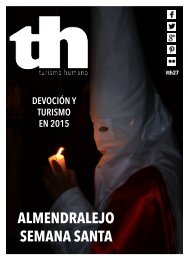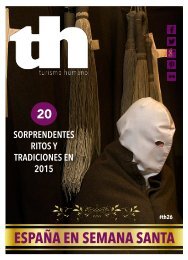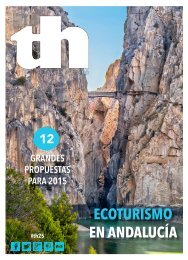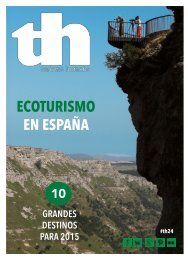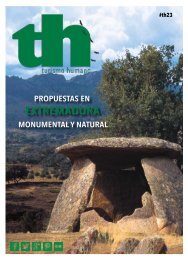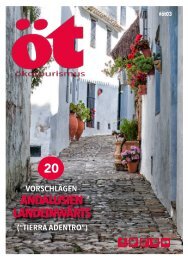Ecotourism 04. Inland Andalusia
During the last decade of last century, the segment of tourism to nature areas opened up in Andalusia, inland Andalusia is a unique offer within Spain and among the best in Europe.
During the last decade of last century, the segment of tourism to nature areas opened up in Andalusia, inland Andalusia is a unique offer within Spain and among the best in Europe.
Create successful ePaper yourself
Turn your PDF publications into a flip-book with our unique Google optimized e-Paper software.
Cazorla (Jaén)<br />
Cazorla<br />
Jaén<br />
The Nature Park of Cazorla,<br />
Segura y Las Villas<br />
This nature park, one of the<br />
largest in Spain with an area<br />
of 214.300 hectares, has been<br />
declared to be a reserve of the Biosphere<br />
by the UNESCO as well as a<br />
Special protection Zone for Birds by<br />
the European Union. It has a wealth<br />
of synergetic species that has favoured<br />
its declaration as a National<br />
Hunting Reserve of Cazorla and<br />
Segura. This protection has made it<br />
a favourite destination for visitors in<br />
search of direct contact with nature.<br />
It has an excellent offer for hotels<br />
and holiday cottages as well as<br />
numerous sports offers in the heart<br />
of nature.<br />
The rivers Guadalquivir and Segura<br />
have their source in this nature<br />
park, two rivers that flow through<br />
incomparable landscapes and the<br />
possibility to get to know over a<br />
hundred endemic species, notably<br />
the “Cazorla violet” and you can<br />
also see 36 different types of mammals<br />
in their natural environment,<br />
including the mountain goat, deer,<br />
fallow deer, moufflon, otter; mongoose,<br />
fox and birds of prey like<br />
the golden eagle; griffon vultures<br />
fly overhead, while back on land<br />
you can see the Valverde lizard, an<br />
endemic species.<br />
Places of interest in the Park’s area<br />
of interest:<br />
• The Tranco de Beas reservoir,<br />
remains of the San Miguel castle,<br />
Bujaraiza, de la Bolera and<br />
Aguas Negras<br />
• The Anchuricas and Valdeazores<br />
lagoons<br />
• The Negra, Cañada Catena,<br />
Montiñana, Los Parrales and<br />
Higuera fountains<br />
• The Bayona, Fresnedilla and El<br />
Robledo fountains<br />
• The Coto Ríos, Llanos de Arance,<br />
la Pascuala fountain<br />
• El Yelmo<br />
• The Saucejo and Cueva del Peinero<br />
refuges<br />
• The source of the river Guadalquivir<br />
• Las Buitreras<br />
• “Salto de los Órganos”<br />
waterfall on the river<br />
Borosa<br />
• Collado del Almendral<br />
synergetic<br />
park<br />
• The templar castle<br />
and the Tíscar<br />
watchtower.<br />
• The Moorish and<br />
Christina castles of<br />
Cazorla<br />
• The historic part of<br />
Segura de la Sierra<br />
TREVOR HUXHAM<br />
8 <strong>Ecotourism</strong>




